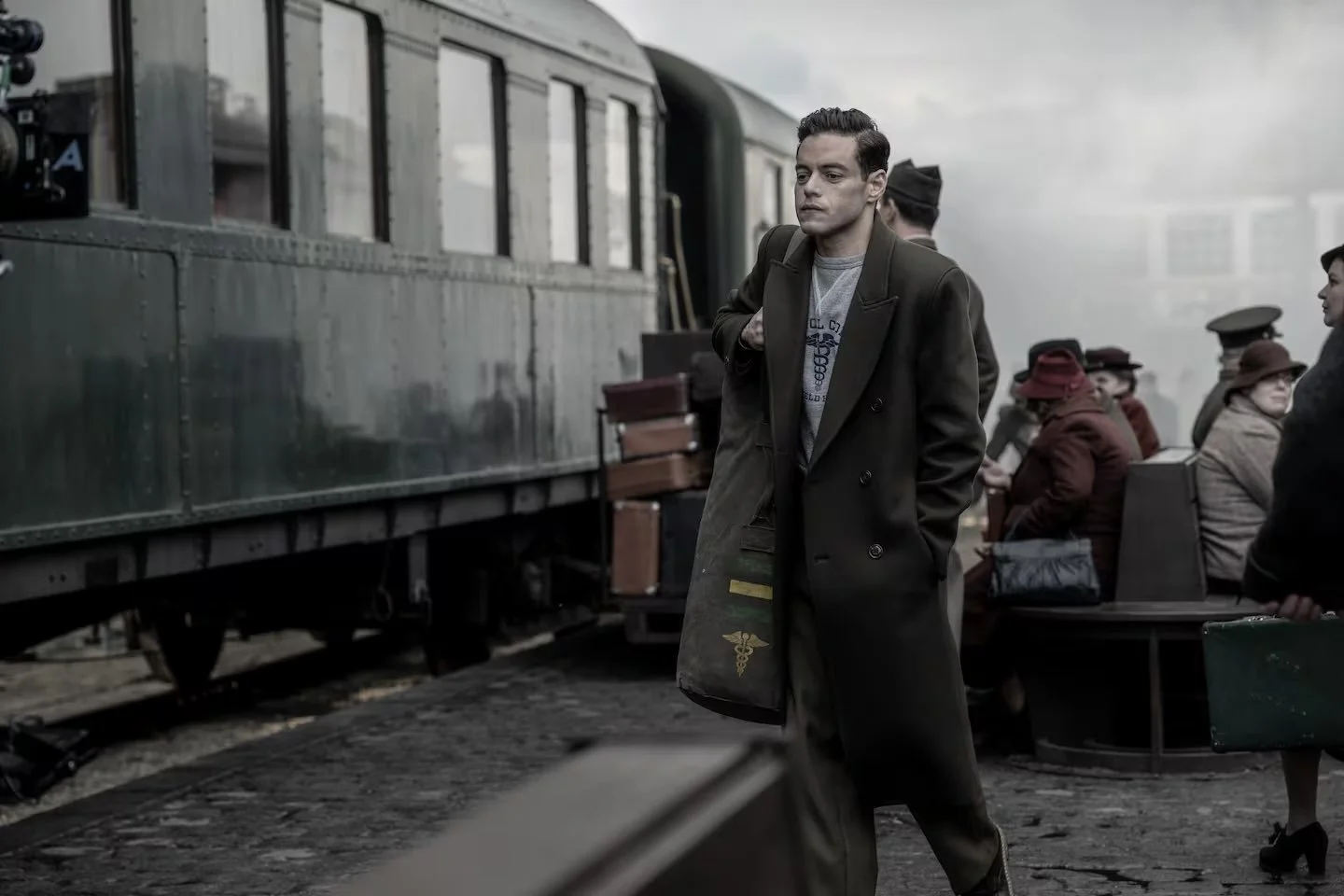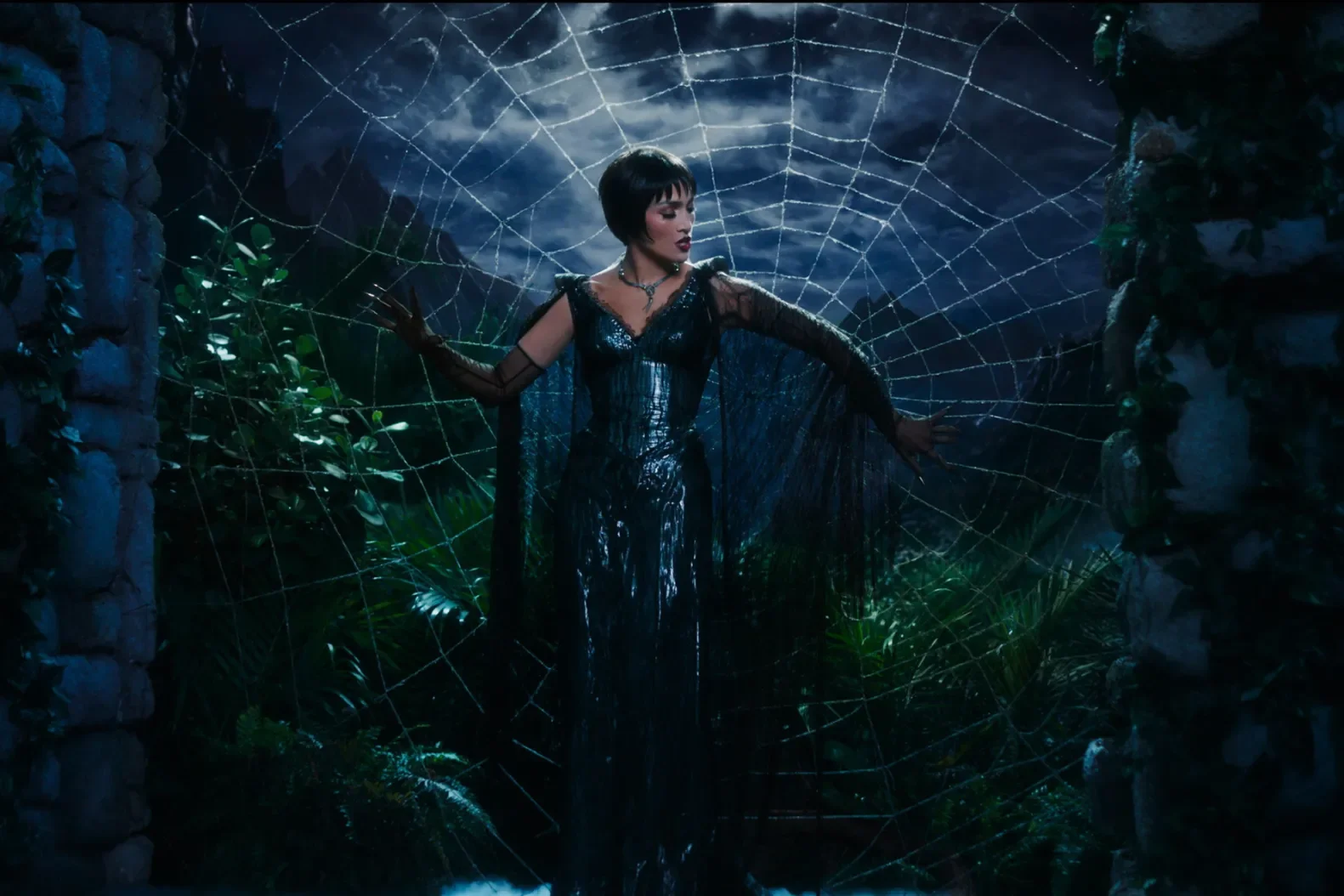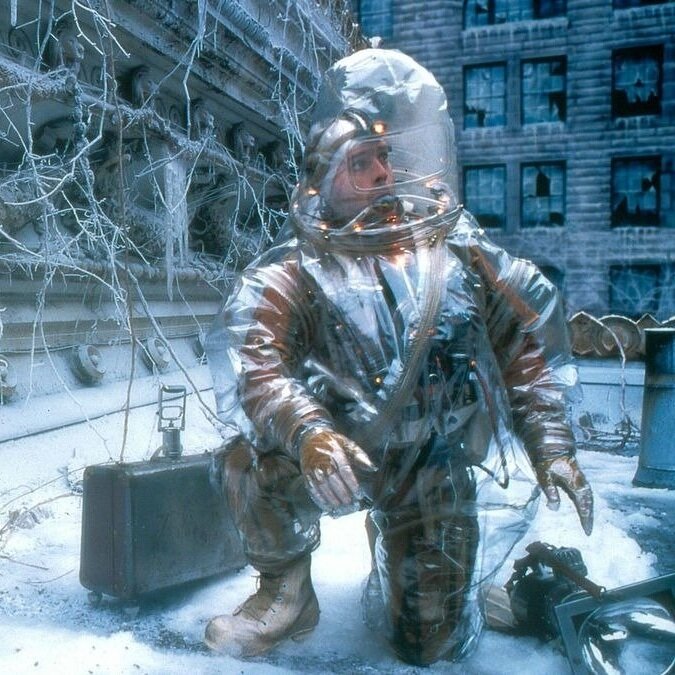Oddities in “So Bad-It’s-Good” Cinema
In select theaters across the globe in August of this year, Neil Breen’s newest film Cade: The Tortured Crossing released to packed or even sold-out screenings. For those blissfully unaware, Neil Breen is an independent filmmaker whose work is lauded in bad movie circles for being technically inept, dramatically preposterous, and hilarious.
But Breen is not a singular example. Bad movies are being distributed by boutique Blu-Ray labels—Vinegar Syndrome, Alamo Drafthouse, AGFA—and seen with greater popularity than ever before. The cynic would likely opine at this stage that laughing at bad art is the cheapest form of commentary. Indeed, the internet has made mocking bad movies into a content machine that frankly discourages low-budget filmmaking. Magazines, podcasts, and influencers have discussed The Room, Troll 2, and Birdemic at length. Bad movies of this ilk are typically seen as failures. And they are. But some terrible films are not only humorous for their failings, but fascinating. As I have spelunked deep into the “so-bad-it’s-good” caverns of Tubi, Youtube, and The Internet Archive, I have been introduced to a new canon of disasterpieces, the kind that are so warped, so bizarre, and so odd that they slip their thematic bonds and become a freakish kind of outsider art.
This phenomenon is not unique to the twenty-first century. Bad movies trace back to the very beginning, but records are poor. If a movie was bad, chances are the prints were destroyed, lost, or intentionally not found. As many have argued, the preponderance of shot on video (henceforth SOV) films in the 1980s marks the birth of the modern bad amateur movie. But a decade prior, exploitation films were made with similar hallmarks: low production values and even lower standards.
Take If Footmen Tire You, What Will Horses Do? If that title seems verbose and perhaps a bit alchemic, it’ll be reassuring to know that it comes from the old King James, a passage from Jeremiah to be specific. “Footmen” is interpreted here to be a catch-all for current sociopolitical problems. The film, a 1971 Christian exploitation movie, was the passion project of one Estus Pirckle (yes, that’s really his name). Mr. Pirckle was a Baptist minister from Mississippi who made a trio of bizarre moralistic films: Footmen, The Burning Hell, and The Believer’s Heaven. It’s worth mentioning that Nicholas Wending Refn—the insane Danish director behind Only God Forgives—is the one who pushed to have these films released on Blu-Ray. While Hell and Heaven are standard didactic fare, Footmen is a true gem in bad taste cinema.
The film is fifty-two minutes long and consists of three basic segments: Estus Pirckle giving a paranoid sermon in extreme close-up, reenactments of the scenarios he describes, and a goofy melodrama about a woman named Judy who listens to Pirckle’s theology and decides to give up her vices. But the message of the film is what makes it so special. Pirckle’s thesis is essentially that Communists will invade the United States, kill our children, and take over the country. Only God can save us. He posits many questionable statistics—at one juncture he says that Communists can take the United States by force in fifteen minutes once they have boots on the ground—but Pirckle provides no clues as to where corroborative information could be extracted.
Throughout, Pickle makes a number of hilariously obtuse claims: cartoons advocate murder, dancing is an excuse for teens to have premarital sex, and the classic observation that Communists tie people to trees and lower them onto spikes. In the reenactments, director Ron Ormond—himself a magician turned born-again Christian—appears to have gotten the town, or more likely the church group, together to stage repetitive scenes of Communists torturing Christians. For instance, after refusing to revoke Jesus Christ as his savior, a child is decapitated by a Communist brute with a machete. There is a shot of the fake head as it sails into a grassy, suburban backyard.
My favorite sequence in Pirckle’s opus is surely the school scene. The stage is set with a Che-Guevara-looking character sitting in what is obviously the desk of a real elementary school teacher. He tells his students—all very young children—to pray to Jesus to bring them candy. Obviously, this results in nothing. Professor Che then brings in a bag of candy for the students, straight from Casto himself, the message being that Fidel Castro is more powerful than Jesus Christ because he can give you candy and the King of Kings can’t. Of course, Pirckle assures his audience that such strategies of brainwashing are highly effective.
Footmen is filled with formally inept episodes like this. Most of them involve mass shooting, child violence, rape, or a combination of these. Many sequences end with shaky cam shots of well-dressed, middle-class white Christians lying in the glass, covered in unconvincing fake blood. All of that sounds perhaps disturbing, but in execution, it’s utterly comic and so thunderously earnest that it swivels at light speed to become vaguely endearing. Footmen is the product of paranoid, late-stage Christian cultural entropy. It’s the ultimate out-of-touch milestone where sincerity is indistinguishable from parody. Pirckle’s apocalypse—which he consistently calls Biblically ordained—is so preposterous that it seems intentional. In the film, a group of Christians is forced to sit outside for an entire day chanting “Christianity is stupid. Communism is good.” This is supposed to be an example of the Communists’ cunning mind-games.
There is no appropriate string of words equipped to describe what Footmen is, so I advise the curious to seek it out. Watching the film on Tubi has the alluring side-effect of injecting commercials for men’s grooming products in the middle of Pirckle’s grand tirade against the ills of modern society. For completeness, it’s important to note that the film ends with Pirckle looking directly into the camera and asking three times, “Will you come?”
Our next stop in this examination is Dangerous Men. Directed by an Iranian man by the name of Jahangir Salehi, Dangerous Men is a SOV miracle. Salehi was a friend of the Shah and made films in his native land until he was forced to flee after the Revolution of 1979. The movie was shot piecemeal over a period of perhaps twenty years, finally being released in a few American theaters in 2005. After this, Dangerous Men was more or less deposited by good taste and only recently resurrected on Blu-Ray by Drafthouse Films. Essentially, Salehi—under the pseudonym John S. Rad—tried to make a red-blooded American action movie. For bad movie connoisseurs, this tale should sound eerily similar to the creation of Samurai Cop. But I’d prefer to compare it to the American Dream.
In a typical review, I might explain the plot of the film now, but such a task is rendered impossible here, for Dangerous Men is the most narratively incoherent film I have ever seen. It obliterates the basic components of cinematic grammar. For instance, the opening scene depicts a man presenting a woman with an engagement ring. We never see this couple again. In literature, such a phenomenon is called gnomon. John Rad’s application of gnomon makes my head spin.
Ostensibly, the main character of the movie is a woman named Mira, whose fiancé is killed by a group of bikers. Instead of taking revenge on the bikers directly—this role is fulfilled by a police officer who may or may not be related to her—Mira decides to kill as many men as she can. This apexes when she decides to become a prostitute who kills her clients.
In one scene, Mira hitchhikes in the desert for some undisclosed reason. She gets picked up, and because the mighty John Rad has no talent for depicting filmic time, the next shot shows Mira sound asleep in the truck of a stranger. This stranger, who looks like an elderly Sardinian but has the voice of a youthful Brit, attempts to rape Mira. She feigns attraction to the man in order to get his gun, which she uses to threaten his penis. Mira forces the man to undress completely, pick up sticks, sing a song, and dance off into the horizon. One might reasonable expect the story to continue following Mira, but instead, Rad chooses to spend another ten minutes tracking this naked British man as he talks to himself in the desert.
During the many scenes of assault and rape in Dangerous Men, Rad blares a looped, techno funk beat. This music, allegedly composed by the director himself, bears a striking similarity to Sega’s own ToeJam and Earl soundtrack. It is the single most inappropriate score in a motion picture that I have ever seen.
The opening credits of Dangerous Men are similarly ludicrous. John Rad is credited as the director, executive producer, writer, editor, production designer, set decorator, and composer. No other names appear. And it’s all set to that infernal five-seconds of funk and generic footage of waves on a beach.
Really, the radical thing about Dangerous Men, is its structure. It whips back and forth between different characters and locations with no connective tissue whatsoever. Mira’s story ends around the halfway point, and the police go after the leader of the bikers, the devious Black Pepper. The last act of the movie involves a pathetic chase between Black Pepper—a burly man with curly blonde hair, a tank top, and embarrassing, white-rimmed sunglasses—and the aged police chief. Both these characters have about ten minutes of collective screen time.
I will, however, stop describing the individual scenes; the pure ecstasy of watching Dangerous Men must be preserved for the uninitiated. I’ve watched it three times myself. But not because it’s terrible, though it certainly is. I’ve had such a strong reaction to Dangerous Men because it’s glorious.
Dangerous Men is glorious because it elucidates a certain drive we all have. If an Iranian architect new to the country with modest means and a motley crew of unprofessional actors can make a movie seen on crisp Blu-Ray in 2023, then surely we all can accomplish something. John Rad had high hopes for his project, predicting it would be a blockbuster like E.T. Of course, it wasn’t. But the remnants, the Nietzschean abyss Rad depicts, constitutes more than a bad action flick. Somehow, this rape-revenge story seems topical today; it’s a film displaced, one that does not belong in the cinematic canon, but as a result, must be included.
To end, we push forward into the future of so-bad-it’s-good cinema. And no film walks this cutting edge with more clout than Mark Region’s After Last Season. Released in 2009, After Last Season is a particularly interesting work because it’s oddness may be intentional. The best bad movies are the earnest ones, and such is the case with other two films I’ve featured. With After Last Season, though, the film could be anything from a tax-evasion scheme to high art. I personally feel it’s somewhere in between.
The film follows a medical student named Sarah who participates in fellow student Matthew’s psychology project. Matthew has designed chips that, when placed on the participants’ temples, allow two people to share mental images. Region depicts these spaces with CGI that looks like it could have been rendered in ancient Greece. Apparently, there is a serial killer on the loose, and Sarah has visions of him, visions which Matthew interprets. It seems that Sarah can visualize the killer’s victims before he attacks them.
After Last Season can kindly be described as a minimalist drama. The characters populate about three locations in total—mostly just one room—and it is revealed that the entire experiment was a dream. Except, then the killer turns out to be real and is thwarted by a ghost named Craig. But then the ending suggests that it was all a dream inside of another dream. It’s very lazy storytelling, which is appropriate for the aesthetic.
Though it was shot on sumptuous 35mm film, After Last Season has the worst production design of any theatrical feature ever released. The opening scene involves a paper MRI machine, and instead of shooting on actual locations—locations as elusive as apartment buildings and college classrooms—Region decided to construct sets in a warehouse. Only, the sets are made of paper and cardboard. It’s actually so bad that it becomes surreal, like Region wanted to construct uncanny liminal spaces.
Conversations are filmed with flat angles, framed so that the characters have no spatial relation. It’s hard to tell who’s speaking with whom or even where characters are in space. Ordinary dialogue is intercut with shots of static objects, like dressers, potted plants, and blank printer paper taped to walls. After a few minutes, this bizarre aesthetic feels vaguely uncanny. All of the performances are slowed to the point of absurdity. Every character is a tabula rasa, delivering dialogue without even the barest hint of feeling.
Often, there will be more space in the frame above the actor’s head than below, and in some sequences, there are looming shadows of objects that are not in the frame. At one point, there is an establishing shot of a building, but instead of fabricating some sort of sign, Region just superimposes text onto the wall of the structure. This looks as good as you might imagine.
After Last Season is filled to the veritable brim with this sort of formal incompetency. At one point, a man who is never identified yells inside of a kitchen storage room “Angie, it looks like someone left a book in the living room. Is it yours?” Apparently, this man has an accurate chart of every object in his living room, such that a rogue book might disrupt it all. Really, there’s a metaphysical badness to this film, from the low-poly CG, void-like sets, bizarre cut-ins, and lingering edits that continue long after an actor has finished delivering their lines.
Of course, it might seem that these problems are the result of a small budget. However, After Last Season had a reported budget of five million dollars, more than enough to make a decent looking ninety-minute feature. This discrepancy has led some to speculate that After Last Season was made to be a tax write-off. However, that theory implies Region actually had a high-enough income for a reported loss to be of accounting value. Others have argued that the surreal, postmodern, nightmare landscape of the film is wholly intentional. Perusing Letterboxd reviews, for instance, will illuminate many claims that Region is trying to break down formal conventions and destroy the mechanisms of the cinematic form. I find that possibility highly dubious myself.
If I’m honest, After Last Season is probably the worst movie I have ever seen. I’ve watched movies more odious, disappointing, and boring, but on every conceivable level After Last Season is the greatest cinematic tumble I’ve witnessed. Theaters that originally showed the film were encouraged to burn the prints because it was cheaper than sending them back.
Yet badness is a quality all its own. Badness perhaps should be celebrated, at least if it’s interesting enough. And all the movies I have analyzed here fit the bill; they are all inexplicable products, films that betray the basic tenets of moviemaking. But that is their charm. Often, art made by those outside of the establishment feels foreign or wrong. It doesn’t mean that the three films I’ve featured are great art; actually, they are bad art. Bad art, though, has an important position when it is technically illuminating, when it causes introspection, and when it gives us a good chuckle.
Popular Reviews











































